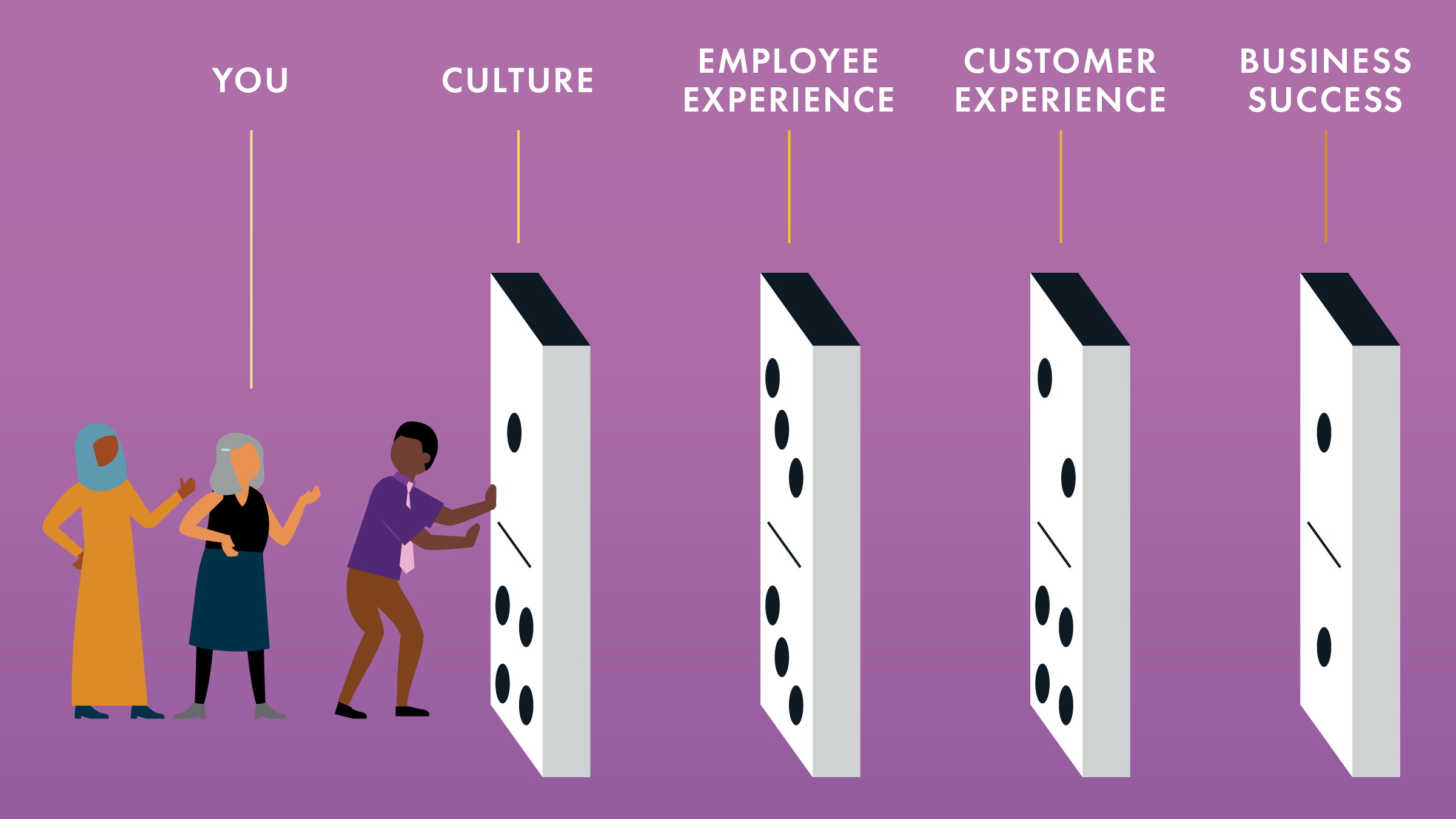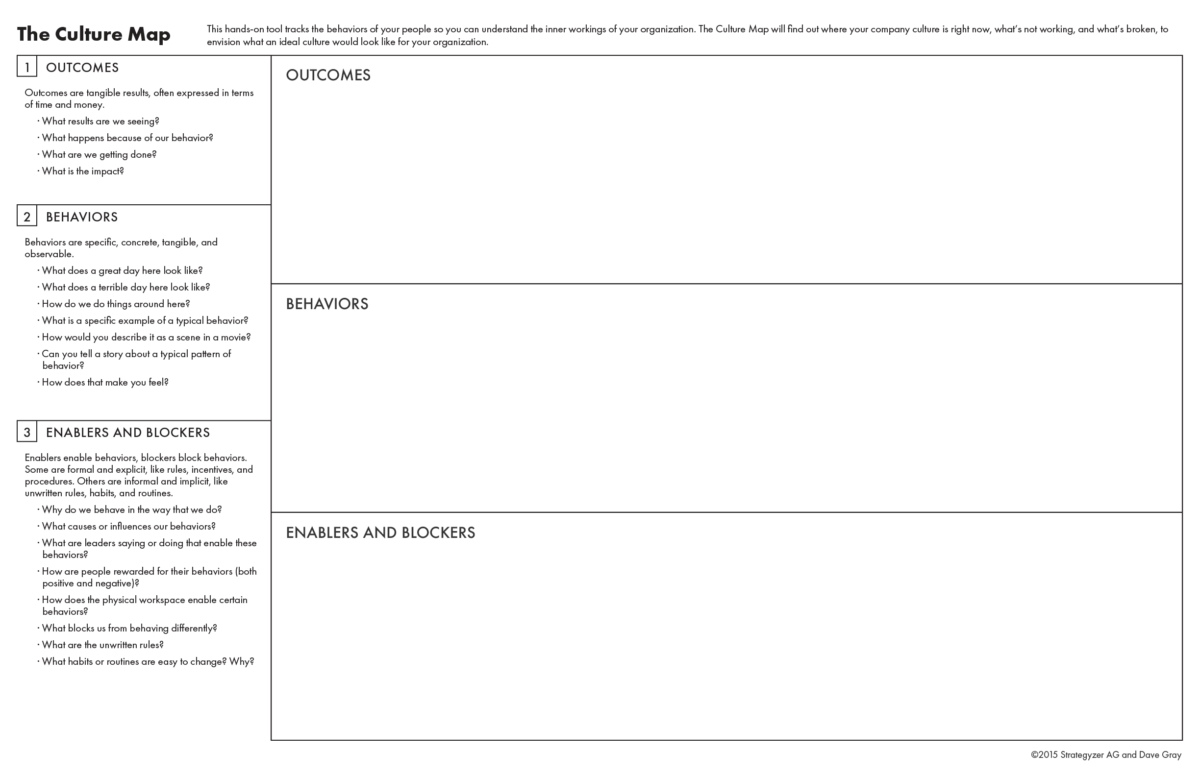Has your company migrated toward more remote and hybrid work since the pandemic? If so, you might want to take a look at your company culture. Here’s why…and how you can get started with your own culture refresh.
Whether your organization has embraced being fully remote, adopted a hybrid approach, or has most employees back at the office, we can all acknowledge the last few years have been nothing short of unique—and have provided a whole new set of organizational challenges to navigate, especially around culture.
A Strong Culture is Tough to Establish
Even pre-COVID, when the “traditional” in-office setting was the norm across many organizations, it was still difficult to implement a strong culture. Today’s fully remote and hybrid teams up the ante by introducing additional culture challenges.
We often hear “trust is challenging with remote teams,” “I really miss my co-workers,” or “we’re unsure how to re-establish connection at the start of this “future of work.”
So how do we move past these roadblocks and toward a vital culture that energizes and connects workers whether they’re in the office, working remotely, or hybrid?
Why Prioritize Company Culture?
It might help to first understand the power of having a strong company culture.
Culture is a bit like the first domino in an organization: it informs employee experience, which informs customer experience, which informs business success. Here are just some of the benefits of prioritizing culture in your organization:
- Revenue growth. Companies with great cultures are almost twice as likely to experience revenue growth over three years,1 yet only 15% of organizations are successful in transforming their culture.2
- Employee satisfaction. According to a 2019 report focused on employee satisfaction from Glassdoor Economic Research,3 an organization’s culture and values are overwhelmingly the strongest predictors of employee satisfaction. A separate 2019 survey from Glassdoor found the majority of workers prioritize culture above salary when it comes to job satisfaction, which is even more prevalent among millennial workers.4
- Enhanced recruiting. The same survey also found 77% of people consider a company’s culture prior to applying for a job and almost as many people would not apply to a company whose values did not align with their own personal values. In addition, an AP report found nearly half of employees surveyed would leave their current job for an organization with a better culture, even if it offered lower pay.1
- Better work conditions for all. Demographics also come into play here; according to a 2021 SHRM report, 51% of Black Americans state workplace culture makes it difficult to maintain a life/work balance, while only 26% of white Americans gave the same response. Similarly, 64% of women leave work feeling exhausted, as contrasted with only 54% of men.5 It is always important to consider how culture can impact workers from different backgrounds.
Don’t Confuse Culture with Amenities
When holding a lens to your organization’s culture, it’s important to separate culture from amenities. CEO and co-founder of ConvertKit, Nathan Barry, who has been working remotely for 10+ years, says we often confuse the two6:
[People outside of Barry’s company] would list off … things like free lunches, the ping pong table. That’s so much fun! But [they’re] not talking about culture, [they’re] listing amenities. If my friends and I were going to book an Airbnb for the weekend, you’re listing off the things that it has. You’re describing company culture as if it was a list of amenities. That’s not what culture is.
He then provides us with a better definition for culture beyond amenities, from Julian Lute, Senior Strategic Advisor at Great Place to Work:
Company culture is how you do what you do in the workplace. It’s the sum of your formal and informal systems and behaviors and values, all of which create an experience for your employees and customers.
Barry breaks this down, explaining culture is how you give feedback, make decisions, and navigate conflict. To be clear, when Barry says “you,” he isn’t referring to an individual employee—he’s referring to the organization as a whole.
Pro Tips for Transforming Culture
Building, or rebuilding, employee connection is challenging in a hybrid and distributed world because it takes time, planning, and intentionality, which can be in short supply in small organizations.
It’s important to be patient, transparent, and consistent to gain the trust of your co-workers. Keep in mind, too, that culture transformation requires collaboration, consistency, and authenticity.
XPLANE has helped many organizations develop culture transformation strategies to accelerate organizational change—and because people are at the center of any change effort, we use co-creation and people-centered design to build solutions that stick.
XPLANE Director of Consulting Malarie Juricev, Senior Consultant Greg Netzer, and Controller Gretchen Daguanno offer some key tips for transforming culture in your organization:
Tip 1. Examine existing cultural values. If your organization has existing cultural values or guiding principles, understand and value the process it took to get them in place—and do your best to keep them as is.
Action: Consider refreshing descriptions for each of your company’s values to reflect current times. Interview employees to ascertain the pulse of the organization around any values that may need to be refreshed. Values are meant to be long-term and to reflect how we want to behave and treat one another.
Tip 2. Assess your current culture. Ask your team to share examples of what “culture” looks like in action. It’s one thing to write a statement or create a visual of culture in action but it’s another to ensure people understand how culture shows up day-to-day, specifically and practically.
Action: Use the Culture Map worksheet to think through key elements of your culture, examine what makes it tick, and envision an ideal culture.
Tip 3. Get employees involved. Involving employees is critical as people support what they help build. It’s much more effective than just telling them what the new culture will be. Invite honest feedback to understand employees’ current experience with culture. Inclusion is critical in this work, so remember to welcome as many voices as possible to the feedback and shaping process.
Action: Set up a collaborative digital whiteboard—MURAL or Miro are great tools—and ask employees to review and give feedback asynchronously.
Some Final Advice on Culture Transformation from the XPLANE Team
What one suggestion would XPLANE’s experts give to anyone trying to transform their company culture? Here’s what they had to say:
GREG: “Pay attention to the things you value—the things that make you proud to do the work you do, or proud to work alongside the people you do. If you can get clear on what you value, and the impact it has on your organization, then you can start to build a culture that supports that value and allows it to grow.”
MALARIE: “For teams that don’t have consistent external exposure, making time to learn what other teams or organizations are doing is very important. Understand and honor the culture journey to date, and use a Diversity, Equity, and Inclusion (DEI) lens in your approach.”
GRETCHEN: “Take the time to have conversations with your leaders and employees. If not properly thought through, an organization’s culture will not change, but the way it is felt and experienced may change with the introduction of new technology, ways of working, growth, etc. An organization’s culture should guide leaders and employees on how they achieve an organization’s goals.”
Remember, culture is the first domino in creating business success, so you’ll want to make your company’s culture as great as you can (get started with these six games to help you envision the culture you want).
Want Help Transforming Your Culture?
You’re in the right place. XPLANE has been helping organizations of all sizes and disciplines design and realize their ideal culture for nearly 30 years. If you’d like to see how XPLANE can help your organization, we invite you to peruse our completed projects.
If you’d like more information or have questions or comments about this post, don’t hesitate to contact us!
1 “Culture & Cash Connection: New Report Ties Revenue Growth to Companies with Healthy Cultures.” Business Wire press release. April 2, 2019. Culture & Cash Connection: New Report Ties Revenue Growth to Companies with Healthy Cultures (apnews.com).
2 Goodridge, Niki. “Only 15% of Organizations Succeed in Transforming Their Cultures.” The i4cp productivity blog. March 21, 2019. Only 15% of Organizations Succeed in Transforming their Cultures (i4cp.com).
3 Standsell, Amanda. “Which Workplace Factors Drive Employee Satisfaction Around the World?” Glassdoor Economic Research. July 11, 2019. Which Workplace Factors Drive Employee Satisfaction Around the World? – Glassdoor.
4 “Culture Over Cash? Glassdoor Multi-Country Survey Finds More than Half of Employees Prioritize Workplace Culture Over Salary.” Glassdoor. July 10, 2019. Culture Over Cash? Glassdoor Multi-Country Survey Finds More Than Half of Employees Prioritize Workplace Culture Over Salary – Glassdoor About Us
5 Society for Human Resource Management (SHRM). SHRM State of the Workplace Report 2021-2022. Accessed September 15, 2022. SHRM State of the Workplace Report 2021-2022.
6 Barry, Nathan. “Building a great company culture in a remote team.” Running Remote conference session recording. May 18, 2022. Building a great company culture in a remote team – Nathan Barry @ConvertKit – YouTube.

